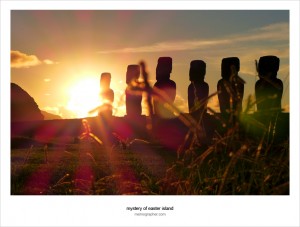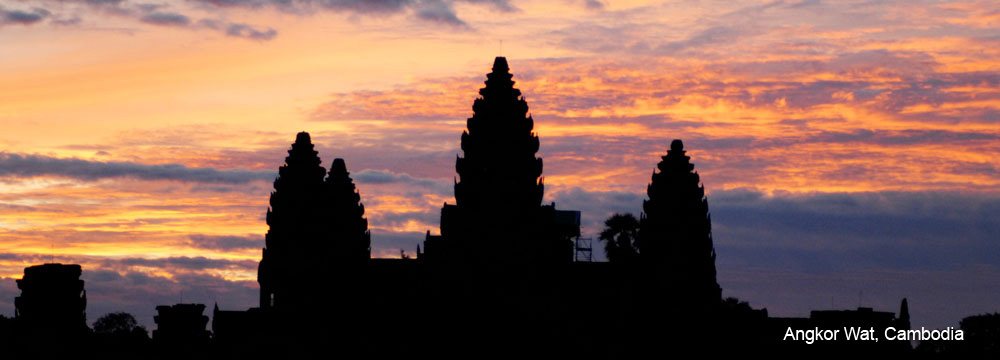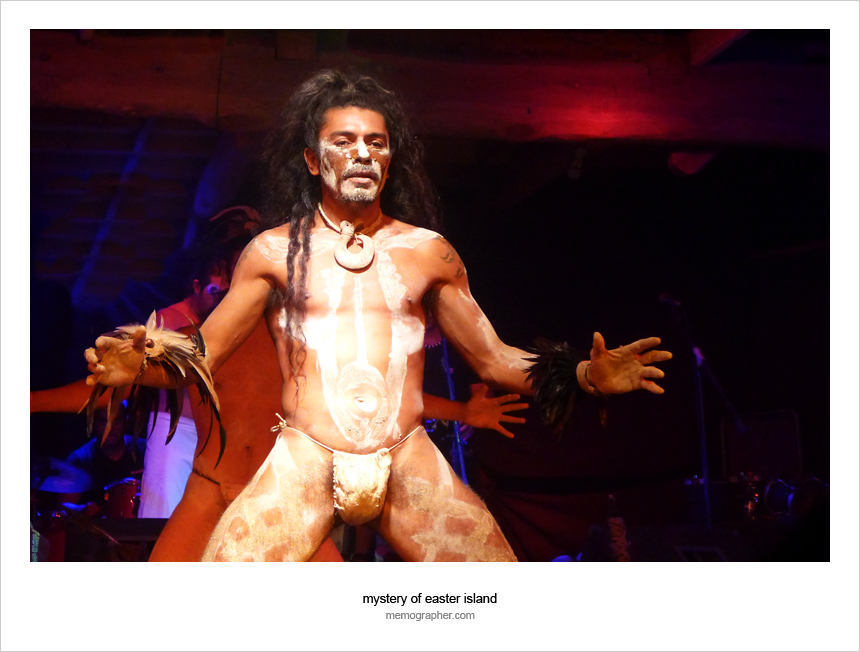I am sure that every traveler has taken at least one I Was Here! photo of him/herself – a Postcard-photo. Years ago, a traveler had to go to a post office to mail a postcard with a view of a visited place. In the era of digital photography, cellphone cameras, and Internet, especially with Wi-Fi available at any hotel and …
View Photos
Dedicated to this blog’s 2-year Anniversary. Here is the closing part of my photo-trilogy “Rapa Nui- The Island. The People. The Museum”. If you are about to explore Easter Island by yourself, I would highly recommend to start your exploration at The Father Sebastian Englert Anthropological Museum – Rapa Nui Museum. The museum is dedicated permanently to safeguard cultural heritage …
View Photos
This is the second part of my photo-trilogy “Rapa Nui- The Island. The People. The Museum”. Rapa Nui are native people settled on Easter Island in the first millenium CE and created a thriving Rapa Nui culture, as evidenced by the moai and other artifacts. However, human activity and overpopulation led to gradual deforestation and extinction of natural resources, which …
View Photos
Moai are massive monolithic figures at Easter Island, and they are what the island is famous for. The statues are a part of the worship of the ancestor gods and built to honor important people of the tribes who passed away. Native islanders, called Rapa Nui, carved the idols with stone tools from compressed volcanic ash in approximately 1250-1500 A.D. …
View Photos
Dedicated to the 13th Anniversary of my Intercontinental travel. Easter Island (Rapa Nui) is an island in the southeastern Pacific Ocean, which is famous for its 887 extant monumental statues, called moai. It is the most remote inhabited island in the world. The nearest continental point lies in central Chile, at 3,512 kilometres (2,182 mi). The name “Easter Island” (Isla …
View Photos
 FIFA World Cup Brazil. Dreams Do Come True!
FIFA World Cup Brazil. Dreams Do Come True! The Gothic Gargoyles of Notre Dame de Paris
The Gothic Gargoyles of Notre Dame de Paris Photo Trilogy: Rapa Nui – The Island. The People. The Museum
Photo Trilogy: Rapa Nui – The Island. The People. The Museum Easter Island: My New Friends Moai
Easter Island: My New Friends Moai Mystery of Easter Island
Mystery of Easter Island Top 10 Shocking Asia Experiences
Top 10 Shocking Asia Experiences Havana, Cuba. American Classic Cars
Havana, Cuba. American Classic Cars Havana, Cuba. The Lost Island
Havana, Cuba. The Lost Island Incredible India. Pink City – Jaipur
Incredible India. Pink City – Jaipur Incredible !ndia. Blue City – Jodhpur
Incredible !ndia. Blue City – Jodhpur FIFA World Cup Brazil. Dreams Do Come True!
FIFA World Cup Brazil. Dreams Do Come True!
 Photo Trilogy: Rapa Nui – The Island. The People. The Museum
Photo Trilogy: Rapa Nui – The Island. The People. The Museum
 Palma de Majorca: From Modern Beach to Gothic Town
Palma de Majorca: From Modern Beach to Gothic Town
 EuroTrip 2013: Czech Republic and Belarus
EuroTrip 2013: Czech Republic and Belarus
 My Orange Crush – Spring Break on Tybee Island
My Orange Crush – Spring Break on Tybee Island
 Cambodia. Siem Reap. Floating Villages
Cambodia. Siem Reap. Floating Villages
 Once a Beauty, Now a Beast. A Photo Story from Vintage Cars Graveyard
Once a Beauty, Now a Beast. A Photo Story from Vintage Cars Graveyard
 Two Spanish Capitals – Barcelona and Palma de Majorca
Two Spanish Capitals – Barcelona and Palma de Majorca
 Santiago de Chile: Street Photographer’s Paradise
Santiago de Chile: Street Photographer’s Paradise
 Stranger Portraits from Archived Thailand
Stranger Portraits from Archived Thailand
 Around Minsk, Belarus
Around Minsk, Belarus
 The End of Brazil Mania. Goodbye, World Cup. Thank you, Fans!
The End of Brazil Mania. Goodbye, World Cup. Thank you, Fans!















